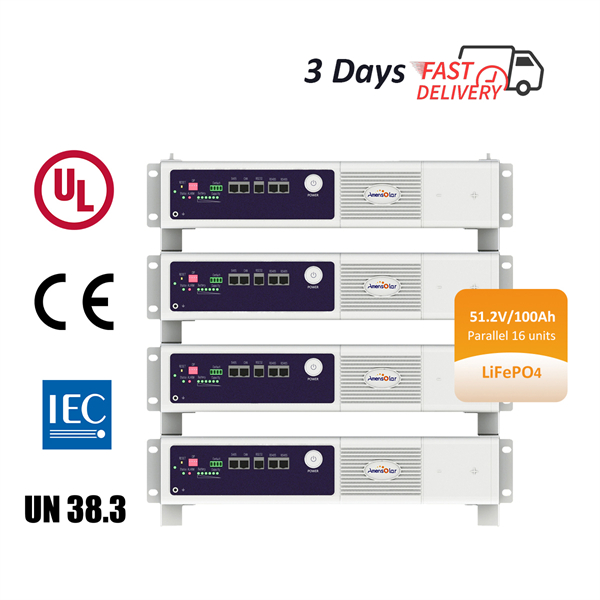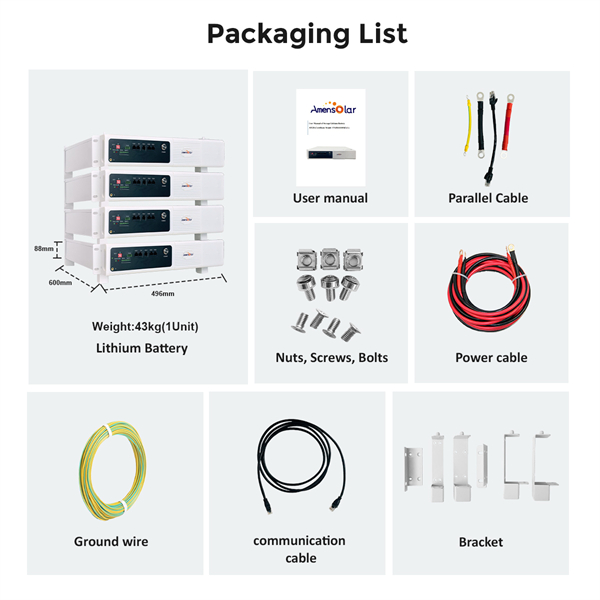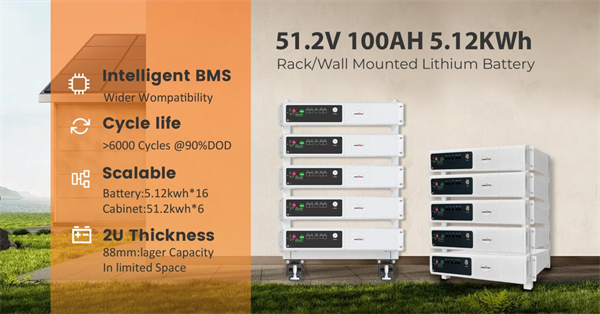Introduction
Solar batteries, also known as solar energy storage systems, are becoming increasingly popular as renewable energy solutions gain traction worldwide. These batteries store the excess energy generated by solar panels during sunny days and release it when the sun isn't shining, ensuring a continuous and reliable power supply. However, one of the most frequently asked questions about solar batteries is how many times they can be recharged. This article aims to provide a comprehensive analysis of this topic, exploring the factors that influence battery recharge cycles, the technology behind solar batteries, and the practical implications for consumers and businesses.

Understanding Battery Recharge Cycles
Before diving into the specifics of solar batteries, it's essential to understand the concept of battery recharge cycles. A recharge cycle refers to the process of fully discharging a battery and then fully recharging it. The number of recharge cycles a battery can undergo is a critical metric that determines its lifespan and overall cost-effectiveness.
Different types of batteries have varying recharge cycle capacities. For instance, lead-acid batteries, which are commonly used in traditional automotive and backup power applications, typically have a lifespan of around 300 to 500 recharge cycles. On the other hand, lithium-ion batteries, which are more advanced and widely used in consumer electronics and electric vehicles, can often handle several thousand recharge cycles.
Factors Influencing Solar Battery Recharge Cycles
Several factors can impact the number of recharge cycles a solar battery can undergo. These include:
Battery Chemistry
The type of battery chemistry plays a crucial role in determining its recharge cycle capacity. As mentioned earlier, lithium-ion batteries generally offer higher recharge cycle counts compared to lead-acid batteries. Other types of battery chemistries, such as nickel-cadmium (NiCd) and nickel-metal hydride (NiMH), also have their own recharge cycle limits.
Battery Management Systems (BMS)
A well-designed battery management system (BMS) can significantly extend the lifespan of a solar battery by monitoring and controlling various parameters such as temperature, voltage, and current. A BMS can prevent overcharging, over-discharging, and other conditions that can degrade battery performance and reduce its recharge cycle count.

Depth of Discharge (DOD)
The depth of discharge (DOD) refers to the percentage of a battery's capacity that is used before it is recharged. Batteries that are regularly discharged to a high DOD will have a shorter lifespan compared to those that are only partially discharged. For example, discharging a battery to 80% DOD will result in more recharge cycles than discharging it to 100% DOD.
Charging and Discharging Rates
The rate at which a battery is charged and discharged can also affect its recharge cycle count. Fast charging and discharging can generate heat, which can degrade battery materials and reduce their performance over time. Therefore, it's essential to use appropriate charging and discharging rates to maximize battery lifespan.
Temperature
Battery performance and lifespan are highly sensitive to temperature. Extremely high or low temperatures can accelerate the degradation of battery materials, reducing the number of recharge cycles it can undergo. Therefore, maintaining optimal battery temperatures through proper insulation, ventilation, and temperature control systems is crucial.
Maintenance and Care
Regular maintenance and care can also play a significant role in extending a solar battery's lifespan. This includes cleaning the battery terminals, inspecting for signs of corrosion or damage, and ensuring that all connections are tight and secure.

Types of Solar Batteries and Their Recharge Cycle Counts
Now that we have a better understanding of the factors that influence battery recharge cycles, let's look at some of the most popular types of solar batteries and their recharge cycle counts:
Lead-Acid Batteries
Lead-acid batteries are the most common type of solar batteries, thanks to their low cost and reliability. However, they have a relatively short lifespan in terms of recharge cycles. Flooded lead-acid batteries can typically handle around 300 to 500 recharge cycles, while sealed lead-acid batteries (such as gel and absorbed glass mat, or AGM, batteries) may offer slightly higher cycle counts.
Lithium-Ion Batteries
Lithium-ion batteries are becoming increasingly popular in solar energy storage systems due to their high energy density, long lifespan, and low maintenance requirements. Depending on the specific chemistry and manufacturer, lithium-ion batteries can offer several thousand recharge cycles. Some high-end lithium-ion batteries, such as those used in electric vehicles, can have a lifespan of over 10,000 recharge cycles.

Nickel-Based Batteries
Nickel-cadmium (NiCd) and nickel-metal hydride (NiMH) batteries are less common in solar energy storage systems but are still used in some applications. NiCd batteries typically have a lifespan of around 1,000 to 2,000 recharge cycles, while NiMH batteries may offer slightly higher cycle counts. However, both types of batteries have been largely replaced by lithium-ion batteries due to their higher energy density and longer lifespan.
Sodium-Ion Batteries
Sodium-ion batteries are a relatively new type of battery technology that offers several advantages over lithium-ion batteries, including lower costs and a more abundant raw material (sodium). While sodium-ion batteries are still in the early stages of development, they are expected to have a comparable or even longer lifespan in terms of recharge cycles compared to lithium-ion batteries.

Flow Batteries
Flow batteries are a type of electrochemical storage system that uses liquid electrolytes to store energy. They have the potential to offer very long lifespans and high cycle counts, as the electrolytes can be replaced or replenished as needed. However, flow batteries are currently more expensive and less common than other types of solar batteries.
Practical Implications for Consumers and Businesses
The number of recharge cycles a solar battery can undergo has several practical implications for consumers and businesses. Here are some key considerations:
Cost-Effectiveness
The cost-effectiveness of a solar battery is largely determined by its lifespan and the number of recharge cycles it can undergo. Batteries with higher recharge cycle counts tend to have a lower cost per cycle, making them more economically viable in the long run.
Energy Independence
Solar batteries provide a way for consumers and businesses to store excess energy generated by solar panels and use it when the sun isn't shining. This can lead to greater energy independence and reduced reliance on the grid, which can be particularly beneficial in areas with unreliable or expensive electricity.
Environmental Impact
Solar batteries can help reduce greenhouse gas emissions by enabling the use of renewable energy sources like solar power. However, the environmental impact of battery production and disposal must also be considered. Batteries with longer lifespans and higher recharge cycle counts can help minimize waste and reduce the overall environmental footprint of solar energy storage systems.

Scalability and Flexibility
The ability to store energy and use it when needed provides greater scalability and flexibility for solar energy systems. This is particularly important for businesses and organizations that have varying energy needs or operate in areas with unpredictable weather patterns.
Future Trends and Innovations
As technology continues to advance, we can expect to see new innovations and improvements in solar battery technology. Here are some future trends that could impact the number of recharge cycles solar batteries can undergo:
Advanced Battery Chemistries
Researchers are constantly working on new battery chemistries that offer higher energy densities, longer lifespans, and faster charging rates. These new chemistries could lead to solar batteries with even higher recharge cycle counts.
Improved Battery Management Systems
Advancements in battery management systems (BMS) could help extend the lifespan of solar batteries by more accurately monitoring and controlling their operating conditions. This could include better temperature control, more precise charging and discharging algorithms, and real-time diagnostics and fault detection.
Grid Integration and Smart Energy Management
The integration of solar batteries with the grid and the use of smart energy management systems could lead to more efficient and reliable energy use. These systems could optimize the charging and discharging of solar batteries based on real-time energy prices, grid conditions, and weather forecasts, further extending their lifespan and recharge cycle counts.
Conclusion

In conclusion, the number of recharge cycles a solar battery can undergo is a critical factor that determines its lifespan and overall cost-effectiveness. Various factors, including battery chemistry, BMS, depth of discharge, charging and discharging rates, temperature, and maintenance and care, can impact the recharge cycle count of a solar battery. Different types of solar batteries have varying recharge cycle capacities, with lithium-ion batteries offering the highest counts. As technology continues to advance, we can expect to see new innovations and improvements in solar battery technology, leading to even higher recharge cycle counts and greater energy independence for consumers and businesses.
Post time: Oct-12-2024








